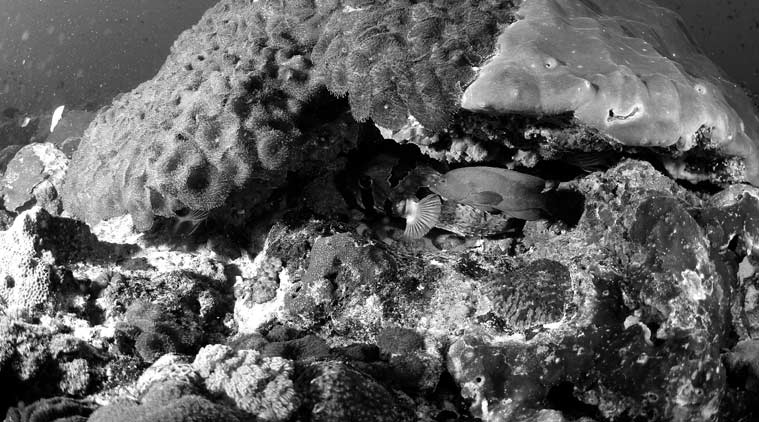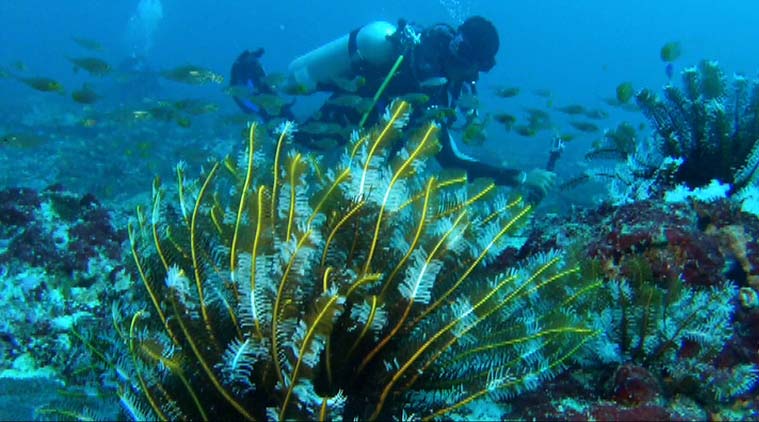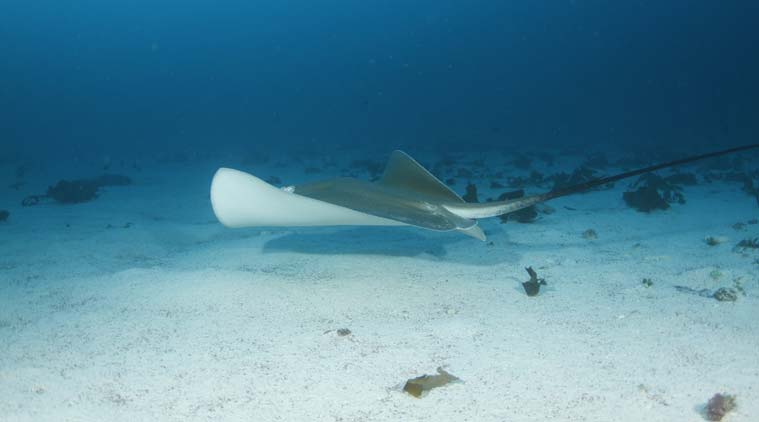India’s Great Barrier Reef?
An NIO expedition has unearthed rich, diverse marine life beneath Angria Bank off Maharashtra coast.
 Situated 140 km off the Malvan coast of Maharashtra, the 600 sq km plateau is a submerged reef with “rich coral diversity unlike the shallow reefs around Andaman and Lakshadweep islands”.
Situated 140 km off the Malvan coast of Maharashtra, the 600 sq km plateau is a submerged reef with “rich coral diversity unlike the shallow reefs around Andaman and Lakshadweep islands”.Humongous barrel and staghorn corals, multi-coloured swarm of groupers and ray fish gliding away, and seamounts teeming with marine life – this is how divers describe the sights in Angria Bank.
Situated 140 km off the Malvan coast of Maharashtra, the 600 sq km plateau is a submerged reef with “rich coral diversity unlike the shallow reefs around Andaman and Lakshadweep islands”, the interim report on one of the first expeditions in Angria Bank by the National Institute of Oceanography (NIO) has found. “Angria Bank has the potential to become India’s Great Barrier Reef,” says Baban Ingole, Chief Scientist, NIO.
[related-post]
During the expedition, the divers found corals in 10 out of the 15 dive sites in the area. According to the report by the NIO, “these sites have diverse marine flora and fauna and the terrain in most of the rocky areas was found to be coralline, made of calcareous materials with no mud”. The findings suggest that Angria Bank could have “rich coral reef history”, says the report.
The expedition was conducted in 2014 as part of the Government of India-United Nation Development Programme’s Global Environment Facility Sindhudurg Project.
The Angria Bank has ample presence of cetacean fauna — represented by whales and dolphins, and multiple varieties of fish including big angel, anemone, groupers, snappers, barracudas, glass fish, flying fish, leopard eels and scorpion fish, among others, the NIO report states.
Even non-academic divers, who have previously explored coral sites in Andaman & Nicobar Islands and Thailand, found sediments and rock corals at Angria Bank “different”. “We were surprised how abundant and healthy marine life in this region was. The seamounts and the teeming life around it were breathtaking,” says Tariq Khan, who was one of the divers in the expedition.
“Such a high diversity of corals was new for us. This coral reef is not off the islands like in Lakshadweep or Andamans, it is in open sea and submerged. We now want to explore the relationship of the corals here to the corals found in the other coral banks in India,” says Ingole.
The findings have also opened up avenues for fresh research. “Probably, there are new species in this virgin territory, especially invertebrates, but we can only confirm this after extensive research and analysis,” adds Ingole.
“Angria bank is even more interesting because of its proximity to Mumbai and the Maharashtra coast that is well-connected, unlike its counterparts in Lakshadweep or Andaman,” points out N Vasudevan, chief conservator of forests of the mangrove cell.









